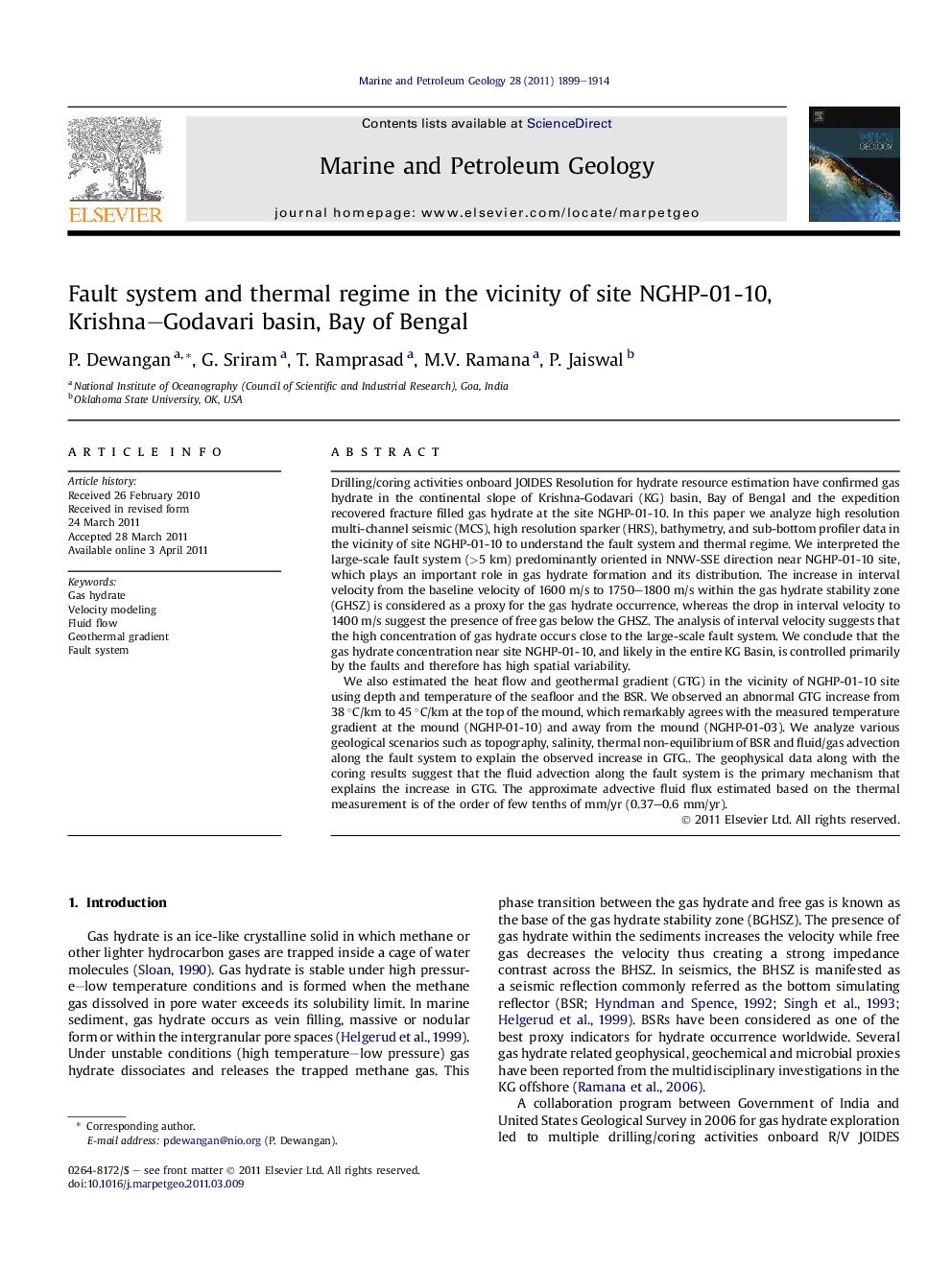| کد مقاله | کد نشریه | سال انتشار | مقاله انگلیسی | نسخه تمام متن |
|---|---|---|---|---|
| 4696126 | 1351657 | 2011 | 16 صفحه PDF | دانلود رایگان |

Drilling/coring activities onboard JOIDES Resolution for hydrate resource estimation have confirmed gas hydrate in the continental slope of Krishna-Godavari (KG) basin, Bay of Bengal and the expedition recovered fracture filled gas hydrate at the site NGHP-01-10. In this paper we analyze high resolution multi-channel seismic (MCS), high resolution sparker (HRS), bathymetry, and sub-bottom profiler data in the vicinity of site NGHP-01-10 to understand the fault system and thermal regime. We interpreted the large-scale fault system (>5 km) predominantly oriented in NNW-SSE direction near NGHP-01-10 site, which plays an important role in gas hydrate formation and its distribution. The increase in interval velocity from the baseline velocity of 1600 m/s to 1750–1800 m/s within the gas hydrate stability zone (GHSZ) is considered as a proxy for the gas hydrate occurrence, whereas the drop in interval velocity to 1400 m/s suggest the presence of free gas below the GHSZ. The analysis of interval velocity suggests that the high concentration of gas hydrate occurs close to the large-scale fault system. We conclude that the gas hydrate concentration near site NGHP-01-10, and likely in the entire KG Basin, is controlled primarily by the faults and therefore has high spatial variability.We also estimated the heat flow and geothermal gradient (GTG) in the vicinity of NGHP-01-10 site using depth and temperature of the seafloor and the BSR. We observed an abnormal GTG increase from 38 °C/km to 45 °C/km at the top of the mound, which remarkably agrees with the measured temperature gradient at the mound (NGHP-01-10) and away from the mound (NGHP-01-03). We analyze various geological scenarios such as topography, salinity, thermal non-equilibrium of BSR and fluid/gas advection along the fault system to explain the observed increase in GTG. The geophysical data along with the coring results suggest that the fluid advection along the fault system is the primary mechanism that explains the increase in GTG. The approximate advective fluid flux estimated based on the thermal measurement is of the order of few tenths of mm/yr (0.37–0.6 mm/yr).
► Fault controlled gas hydrate distribution in the vicinity of site NGHP-01-10.
► Increase in BSR-derived geothermal gradient at the top of the mound.
► Effect of topography, salinity, thermal non-equilibrium on BSR-derived GTG.
► Fluid flow along fault system is the most likely mechanism for the observed GTG.
Journal: Marine and Petroleum Geology - Volume 28, Issue 10, November 2011, Pages 1899–1914